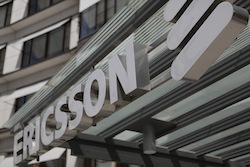Ericsson has demonstrated download speeds of 5GBps on the 15GHz band, as it becomes the latest vendor to test 5G technology.
The Sweden-based company said it used a new radio interface and advanced Multiple-Input Multiple-Output (MIMO) technology as part of the trial, which was witnessed by executives from NTT DOCOMO and SK Telecom.
Ericsson is developing new technology for 5G, including new antenna types with wider bandwiths, higher frequencies and shorter transmission times. It is also building new radio base stations with bespoke baseband and radio units.
Other priorities for 5G were placing small cells within hetnets, examining new frequency bands and coming up with new ways of delivering high speed, high capacity backhaul, according to the vendor.
Johan Wibergh, head of Business Unit Networks, said: “5G will impact both the access and core of mobile networks so we are working closely with leading operators, including NTT DOCOMO and SK Telecom, to ensure a practical and proactive evolution. The development of advanced radio technologies is one of the first critical steps in the realization of a 5G future.”
According to Sathya Atreyam, Research Manager of Wireless Network Infrastructure at IDC, 5G has already evolved from a technology vision to a network and business planning consideration for operators.
“It is important for network equipment vendors — like Ericsson — to demonstrate the potential of 5G as a means to begin creating a demand in the communications ecosystem.”
It is widely anticipated that 5G will be commercially deployed from 2020, although Korea Telecom has said it will go live from 2018.
However, the GSMA’s Director of Technology last week called for calm amid the hype surrounding 5G. During a seminar at LTE World Summit, Dan Warren said: “I don’t buy into the drive towards it. A lot of the technology we have heard about is being lumped into 5G because it’s cool and sexy. NFV and SDN are design options and can be used in 2G, 3G and LTE networks. When it comes to requirements about densification and power efficiency, these are not new and apply to any generation.”
Speaking to Mobile Europe, Ericsson’s Hakan Andersson said: “4G still has a lot of potential and will be there as part of the 5G family going forward. What’s new is we are moving away from mobile broadband for consumers to everything being connected.
“We have a saying at Ericsson about 5G which is that ‘anything that benefits from a connection will be connected’. LTE will not disappear; it will migrate into a lot of the 5G interfaces.”



